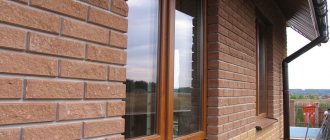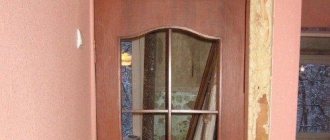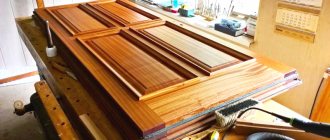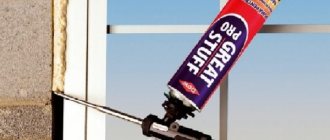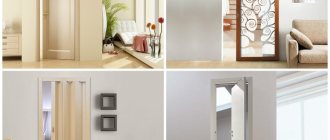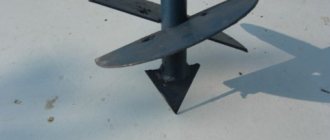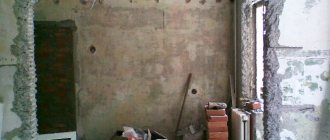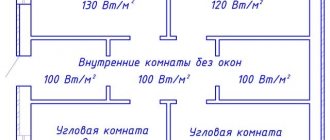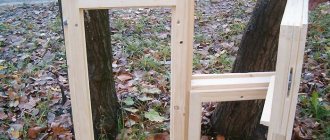Design and purpose of external drip vents for plastic windows
A window sill is a board installed on the street side in the lower or upper part of the window and balcony. Regardless of the type, the design consists of the same components:
- top shelf;
- drainage;
- bottom drip.
The top shelf is the main element that you need to pay attention to when choosing a product. Its size is selected in such a way that there is no obstacle to the drainage of water through special holes.
Window sill plays not only an aesthetic role, giving the window unit a finished look, but also performs a number of other functions:
- protects the window sill and frame from moisture;
- removes water from glass;
- prevents walls from getting wet from rain and snow.
Low tides prevent the walls from getting wet from water.
For each specific window, the low tide must be made according to individual measurements so that it can fully perform the tasks assigned to it.
The most important criteria for choosing ebb tides
We’ll talk about what material your window sills should be made of later. Now let's pay attention to other factors:
- Color. Manufacturers of steel, aluminum and PVC moldings are ready to offer us a wide range of colors. So most often, buyers can choose their products to match the color of the frames. Less often, slopes are selected to match the color of the facade.
- Dimensions. Both length and width are important here. But if the length can still be adjusted by trimming, then the width of the ebb should be greater than the distance from the frame to the edge of the overhang of the rough window sill in order to lie freely on it. You should not make ebbs that are too wide - the probable impact or weight load is reduced, that is, under a layer of snow they can simply break off.
- Availability of external plugs from the seller. It happens, especially in older houses with thick walls, that special plugs are required to close any gaps.
How to choose the right ebb for plastic windows?
The choice of external tides must be approached with all responsibility. A hastily purchased product may not fit your window at all, and then you will have to spend money on purchasing a new one. When choosing a tide for a plastic window, first take the necessary measurements, paying attention to the following parameters:
- width;
- length;
- depth;
- form.
In addition, the type and materials of construction are taken into account, because for a frame house, the product is selected in a different configuration than the ebb for a panel structure.
The color of the external window sill should be combined with the overall color scheme of the window and facade. White structures are decorated with similar tints, colored ones - the same shade or a tone darker.
How to cover the low tide so that the rain does not rain
If your external window sill is made of galvanized steel with a plastic coating (in most cases), then it will definitely be a source of noise when it rains. Not understanding what to do and where to go in the hope of putting an end to this annoying shortcoming, the hostages of the problem begin to “reinvent the wheel”, coming up with completely different, and often very strange, ways to eliminate the sound. Many people think of contacting the company that installed the window and insisting on correcting the defect or do it yourself. In turn, you should not try to replace the low tide yourself, since simply replacing the low tide is unlikely to get rid of its noise during rain.
There is a solution! You will be helped out by the noise-absorbing tide cover “ANTI-RAIN”, which will forever protect your desired rest from annoying noise, and you will certainly hear the result. In addition to this, you can install it in 2 minutes without using a tool, the product does not require frequent replacement, as it is durable and resistant to any atmospheric conditions, which will make your life much easier.
Selection of material for casting
What tides are best for plastic windows? They may not be made from any material and this must be taken into account when purchasing. Failure to comply with this rule will lead to the formation of corrosion and dark streaks on the facade. To avoid such situations, you need to know which raw materials are most suitable for window sills, and for this you need to know the features of each of them. Various materials are used for products: plastic, aluminum, galvanized steel, polyester coating. You can find a structure made of titanium and copper, but such solutions will cost an order of magnitude more. It is important to select a low tide so that its characteristics correspond to the conditions of further operation.
Plastic casting
It would be logical to install the same tint on a plastic window. PVC is distinguished by its increased wear-resistant qualities and its practicality. Plastic has virtually no flaws. The advantages of this material include:
- resistant to moisture and weather conditions;
- does not change its properties at low temperatures;
- has a pleasant appearance and fits any exterior;
- It does not require special care;
- quiet, even drops of rain will fall on it silently;
- quite easy to install.
Plastic has been used in the manufacture of lower and upper ebbs for plastic windows relatively recently and has not yet won the sympathy of users. When it comes to arranging standard structures that are used under normal conditions, PVC is ideal. But if you need increased strength, you should be careful, because... It is precisely this feature that is not characteristic of plastic.
Another disadvantage is loss of elasticity when exposed to sunlight. Being constantly exposed to the sun, the ebb can become brittle and subsequently crack from any impact. Even if the structure does not break completely, microcracks appear on the surface, into which dust gets clogged over time. Initially, the white tint turns gray or yellow, and no detergent can correct the situation. It is optimal to install plastic elements in private homes, where there is no risk of causing damage to it.
PVC products have increased flammability. If a spark or ash gets on it, a mark will immediately form on the surface, which will be impossible to remove.
When choosing a plastic casting, carefully weigh the pros and cons, because for PVC structures it is not necessary to take a product from the same material.
Metal casting
Metal flashings are the best for installation and have a long service life. They are sturdy and easy to install. Metal sheet products include several options: galvanized, aluminum, sheet steel.
Galvanized flashings
Galvanized products are the most common. Their service life reaches several decades. Tides are available in standard white or brown tones. Wood-like options are possible. However, the use of powder paint has greatly diversified the palette and it has become possible to order shades of different shades.
For the production of galvanized castings, alloy steel with a thickness of about 0.55 mm is used. The material gives the product additional strength and resistance to precipitation. The polymer layer on the surface protects the product from the adverse effects of acidic environments. The demand for galvanizing is determined by its affordable price.
The disadvantages of the material are as follows:
- if the steel was painted using powder paint, you need to be prepared for the fact that over time it may crack or burn out;
- Like any metal, galvanized steel is noisy. Impacts or noise from rain will be clearly audible.
It is possible to coat the galvanized sheet with plastisol. This is a more expensive option, but it is less noisy. Another advantage of such a coating is that its surface can be made not only smooth, but also textured, for example, like leather or with embossing. Plastic end caps of the same color with the product are installed on the sides of the drip tides.
Aluminum ebbs
Compared to steel, aluminum is a more expensive material due to its good performance and wear-resistant qualities. Aluminum castings have a wide range of sizes. Their width can reach up to 35 cm. The default color of the products is brown and white, but, as in the case of galvanized versions, color coating using powder paints is possible in any desired shade.
Ebb tides for plastic aluminum windows
Aluminum is not afraid of corrosion, so if the product is not coated with anything, this will not reduce its quality. Like all metals, aluminum is very loud and the slightest touch of any object or raindrops on it will be clearly audible.
Sheet steel castings
Window sills made of sheet steel are not in great demand due to increased corrosion. Over time, even a painted product rusts and loses its appearance. This drawback is especially noticeable on city buildings that are washed by highly acidic rains. The only way out is to coat the steel casting with polymer. This will help protect the product from corrosion and reduce its noise. Sheet steel structures have a number of advantages:
- strength;
- resistance to temperature changes and weather conditions;
- It is possible to manufacture products according to individual sizes;
- easy maintenance and installation;
- a varied palette of colors.
The disadvantage of steel is that it gets very hot in hot weather.
Plastic: good or bad?
Plastic window tints are considered the most “quiet”. When raindrops fall on them, there is almost no sound. And they are also considered inexpensive, which is important if the budget is limited. Only unpainted galvanization is cheaper, but its appearance, after several years of use, is not very attractive, the paint holds very poorly.
What are the disadvantages of plastic moldings? The fact is that plastic loses its elasticity under the influence of ultraviolet radiation, becomes brittle, and can crack under load. And, even if there are no serious cracks, there are always microcracks. They form over time and become filled with dust. After a couple of years, the once snow-white plastic becomes grayish or has a yellow tint. Nothing can wash it off. If installing window sills every five to ten years doesn’t bother you, you can use them too.
Plastic ebbs are two planes connected by jumpers. You have to step very carefully
The following disadvantages of plastic moldings are flammability and significant thermal expansion. Plastic melts at high temperatures. If a cigarette butt gets on it, a hole will be provided. It may not happen that often, but there is a possibility.
Thermal expansion manifests itself if the installation of window sills on windows is done rigidly - the strip is fixed with self-tapping screws. Then, in hot weather, it “goes in waves” and bends. Afterwards, it usually returns to normal. In order not to worry about thermal expansion, oblong rather than round holes should first be made in the edge of the ebb, to which it will be attached. When tightening the screws, do not press down the plastic too much. Then, when changing the size, the plastic casting will not “behave”.
Plastic drip installation
The second point is to leave a thermal gap on the sides, which is filled with silicone waterproof sealant (for outdoor use). In this case, thermal expansion will not cause a “wave”. The plastic will simply expand a little, compressing the sealant, then return to normal. So installing plastic drip sills has its own nuances.
Dimensions of ebb tides for plastic windows
Metal castings are sold in single pieces 6 m long. You can ask to cut a piece of the size you need, then the problem of “where to put the leftovers” will not arise. When choosing a low tide, take measurements in advance. The length is determined by measuring the length of the window opening, but not by the frame, but by wall sections. 2-4 cm is added to the result obtained.
The width of ebb tides for plastic windows is determined taking into account the drip line, the extension of which should be at a distance of 2-3 cm relative to the vertical of the wall. It should also correspond to the width of the window plus 3-4 cm for the projection.
The bend angle of the ebb should be at least 110-1350C. If the ebb has a length of more than 1.7 m, then you need to choose a product with compensation gaps of 5-8 mm at the ends, filled with sealant.
Correct installation
Now let's talk about installation in more detail. This process is not difficult. must be followed:
- The drip sill is supplied with a plastic window to the installation site.
- A waterproofing tape is installed under the product.
- At the junction with the frame, the gap is sealed with polyurethane foam.
- The product is fastened to the stand profile using self-tapping screws. If the building is built of brick, a support profile is not needed, and fastening is carried out to the lower quarter of the opening with screws.
- The area where the ebb comes into contact with the wall is sealed with cement mortar or sealant solution.
- Fixation from below is carried out with polyurethane foam, and it is important to remember its property of secondary expansion, due to which the ebb can rise and lose its slope. Before the foam hardens, the product is rigidly fixed in the desired position.
- Fastening the extreme edges to the slopes and placing them behind the wall ensures that water flows onto the ebb surface. In this regard, it is installed before finishing the street slopes.
Technical requirements for installing low tide
There are no special norms and standards for the selection and installation of sills on plastic windows. It all depends on the type of structure and personal preferences. The only thing that needs to be taken into account is the correctness and step-by-step execution of the technological process for installation with your own hands. If mistakes are made, this will become known only after a while and you will have to spend money on rebuilding the structure. When installing ebb sills for plastic windows, the following should be taken into account:
- perform high-quality sealing of all joints after installation of the product;
- When installing the board, in the places where the metal sheet comes into contact with the wall, you need to raise its edges slightly up. This will protect the walls from interaction with water;
- set the ebb strictly horizontally. This will prevent the accumulation of moisture in one place;
- to further strengthen the casting board, the base under it must be made of cement mortar;
- If you are installing a PVC product, before cutting it into the wall, you must first treat the groove with sealant. You can also lay a layer of film between the ebb and the base, the edge of which will hang onto the wall.
High-quality installation of ebb and flow for plastic windows
Without missing all these points, you can achieve high-quality installation of ebb and flow on plastic windows without resorting to the help of specialists.
Installation of ebb tides
The drainage system is installed after installing and fixing the window in the opening. In this case, the slopes outside should also already be made. The external window sill is secured with self-tapping screws. Moreover, they should not be screwed directly into the frame, but into the stand profile underneath it.
The installation of the ebb is carried out as follows:
- Measurements are taken and the window sill is cut.
- The drainage system is tried on so that it sits evenly and without gaps at the frame or on the sides.
- The installation seam at the bottom of the window is foamed and a waterproofing tape is laid.
- The drainage system is attached and screwed (not completely) into place.
- Polyurethane foam is injected under it, and then the screws are finally tightened.
- A weight (bricks or something similar) is placed on top of the window sill.
The ebb should have an outward slope of 10–15 degrees, so that all the water from it immediately drains when it rains and does not linger. There is no need to level the shelf on the wall underneath it using concrete mortar before installation. All the same, all the voids there will be filled with polyurethane foam. Just don’t squeeze it in there a lot. In air it expands 1.5–2 times and can squeeze out not only the drainage system, but also the window block.
Installation errors
On the one hand, the foam fills all the voids and seals the cracks, and on the other, it glues the window sill to the wall. Plus it dampens the noise a little in the rain.
Almost all plastic windows are now made with small ventilation holes on the outside. When installing the drip tray it is extremely important not to cover them. If this happens, condensation will begin to accumulate inside the profile. Then this moisture will inevitably turn into ice during frost and damage the integrity of the frame.
The optimal installation option is when the edge of the ebb closest to the window is placed under the frame and secured to a special substitution profile. This way, raindrops will definitely not be able to get under the drainage system and into the installation seam. The screws should be screwed in from the middle of the ebb to the sides. This allows you to avoid its displacement, distortions and other deformations.
If it is decided not to use waterproofing tape, then you can use concrete mortar to create an even shelf for drainage and coat it with mastic. Next, the window sill is attached as described above, but very little foam is squeezed out under it. You need just enough of it to glue the ebb.
Operating principle of drainage
Window sill design
The appearance of ebb tides is a purely individual matter, and since... Since they also play a decorative role, you can play with variations of shapes and colors. When bringing your design ideas to life, the main thing is not to overdo it. The ebb should harmoniously complement the window structure and be combined with the facade of the building. The ebb configuration includes both standard shapes and semicircular and shaped options.
Manufacturers also offer a large selection of colors from standard white and brown to the boldest and brightest shades. Thanks to the ability to make a metal cast with an imitation of a wooden surface, you can decorate a window made of wood or metal-plastic with a “wood-like” texture at no extra cost.
Low tide functions
The function of the element is to organize the unhindered flow of water that forms on the surface of glass and frames due to weather conditions . High-quality installation of this element affects the long-term operation of the plastic window as a whole. After all, when moisture gets on the frame or window sill, the building materials used in these areas begin to rapidly deteriorate. If the facade is plastered, the decorative layer begins to fall off.
A drainage system is installed to ensure water drainage from the glass and frame
A window opening with a tint looks neat and harmonious. Flashings for PVC windows are made from various materials and in different colors, so they can be matched to the window and façade in any design.
To fit into the overall design of the building's facade, the ebb should not look provocative and massive. Manufacturers of plastic windows and additional elements offer custom-made sills of the required length, width and color.
When building a new house, the installation of flashings should be carried out at the stage of facade work, when the seams and joints can be properly sealed. When installing a window in an already built house, the installation of sills must be done at the stage of installing a new window or glazing a balcony. When glazing a balcony, an upper ebb is also installed, which is attached to the upper balcony slab.
The upper ebb is installed when glazing the balcony
To ensure that the technology for installing a plastic window is not violated, you should worry about purchasing ebb and flow even at the stage of placing an order for the manufacture of a window system.
If measurements of a window opening for the installation of PVC windows are carried out by a representative of the manufacturer, then in the measurement sheet he will reflect the main dimensions of the recommended product, while the customer’s wishes regarding width and color will also be taken into account.
If there are several visually identical window openings on the facade, this does not exclude errors in their dimensional parameters relative to each other. Usually the height of such openings is the same, but the width may differ slightly.
The sill is made separately for each window according to pre-established measurements.
Therefore, for each specific window, a molding must be made according to individual measurements in order to reliably ensure the performance of its main functions related to the protection of the window structure and facade from moisture.
Step-by-step instructions for installing ebb tides
Installing ebb tides for plastic windows is a step-by-step procedure and can be performed in any weather conditions.
- The casting is checked for compliance and inspected for defects.
- Using cement mortar, a base is made with a forward slope. After it dries, all irregularities are smoothed out.
- If the board has dimensions larger than necessary, it is cut in accordance with the measurements of the window opening.
- Using a marker, a cut line is drawn on the material.
- Using metal scissors, the sheet is cut in strictly perpendicular lines. Don't forget about 2 cm allowances.
- The edges at the top of the ebb and on the sides are folded up to the length of the allowances.
- The ebb is attached to the window frame using self-tapping screws. Typically, window manufacturers provide space in the design for their installation. The joints are sealed with sealant.
- To ensure sound insulation, polyurethane foam is poured under the window sill. Until it hardens, it is advisable to place something heavy on top of the product.
Installing a window sill dramatically changes the appearance of the window and gives it a beautiful appearance. In a similar way, you can install an upper ebb on a window, as well as a balcony or loggia.
How to properly install sills on plastic windows
External slopes are cleaned of dirt and dust before installation. The surface is sanded with sandpaper, the remaining dust and dirt are swept away with a brush. Before starting work, measurements and fittings are carried out. By subtracting the width of the ebb from the width of the slope and dividing the resulting value in half, the amount of the side bend is determined.
Its marks are drawn on each side, after which they are trimmed as follows:
- On the edge that is adjacent to the window, an incision is made to the depth of the bend.
- From the outside, the drip is cut to the depth of the bend and the bent part is cut off at an angle of 45°.
- After this, the edges can be folded.
Before installation, it is necessary to insulate the window sill and secure the ebb into the frame or use another method: insert a special groove into which you need to pour foam. It is already present in PVC structures for ease of installation of plastic drainage systems.
Sealant is applied to the side slopes to prevent water from entering, and foam is applied to the bottom slope to fix the structure. Reliable fastening of the ebb is complemented by self-tapping screws to the window sill strip; after installation, excess sealant and foam are removed.
Self-tapping screws with a 13 mm press washer and a drill-shaped tip are used for easy screwing; in the installation of plastic materials they prevent the formation of cracks.
Is it possible to install drainage systems with your own hands and what will be needed for this, see the following video:
You can use special pads on the end part so that the cut is not very noticeable.
Important points regarding the instructions for installing window sills:
- the edges must fit perfectly with the thickness of the wall; for this, sealant is used;
- the middle of the plumb line is bent in the shape of the letter “c”, erroneously - “g”;
- installation is carried out in dry weather;
- a foam cushion for better fixation of the canvas is required;
- The PVC profile has a special groove from the manufacturer; any ebb is ideally attached to it;
- if there is no groove in the window sill profile and you have to attach the ebb overlapping to the bottom of the profile, then you need to seal the upper edge with silicone;
- It is imperative to ensure that the ebb tide is centered on the window;
- Scissors are used to cut the metal layer; when using a grinder, there is a possibility of paint coming off due to heat.
